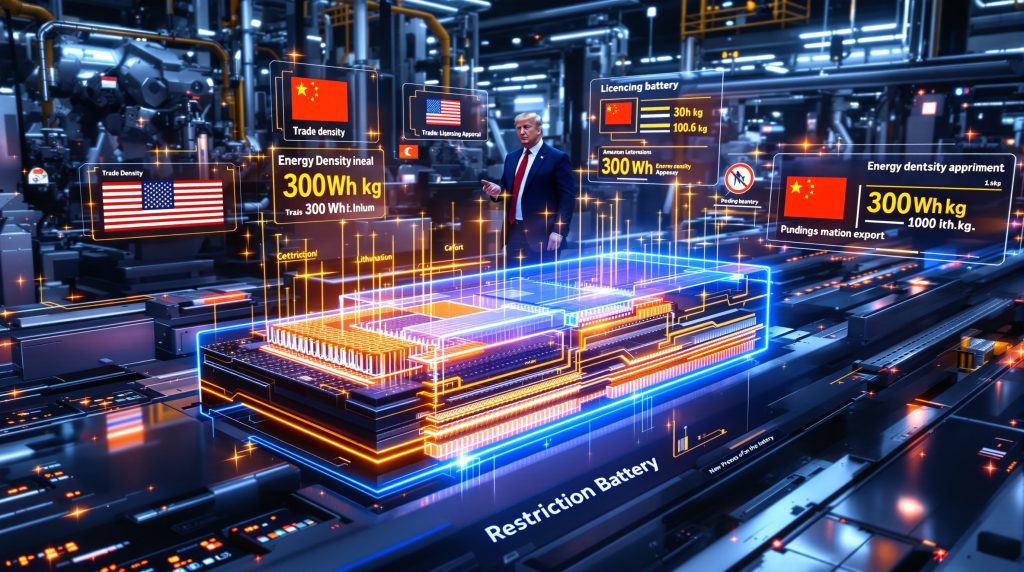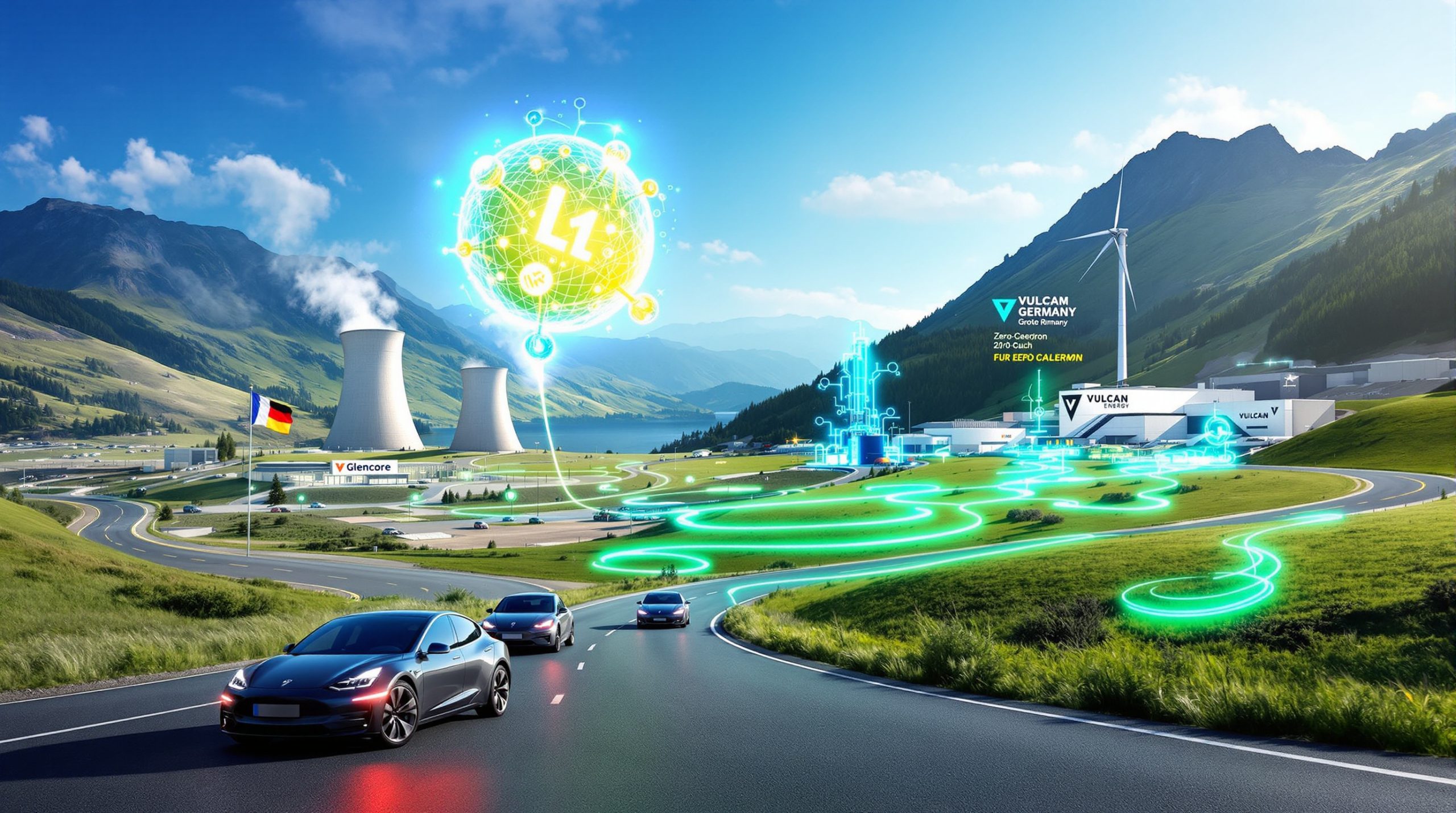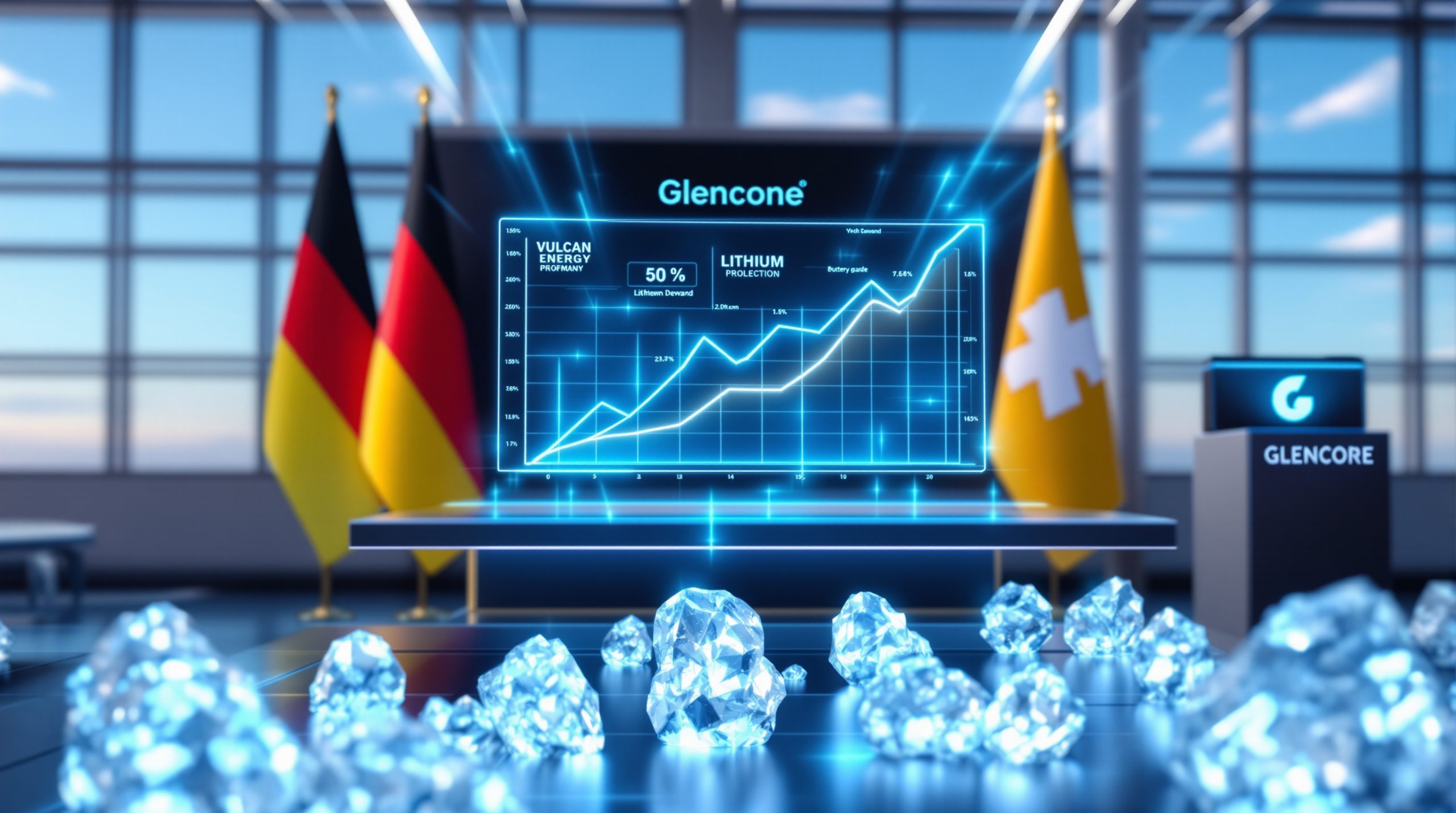China's New Export Controls on Lithium-Ion Battery Technology: Global Impact Analysis
China has announced comprehensive export controls targeting advanced lithium-ion battery technologies, materials, and manufacturing equipment. Set to take effect on November 8, 2025, these regulations represent a significant shift in global battery supply chain dynamics. The controls, approved by China's State Council, will require exporters to obtain licenses for shipping high-performance batteries and related technologies abroad.
The Chinese Ministry of Commerce stated these measures aim to "safeguard national security, meet international non-proliferation obligations, and regulate the export of critical dual-use items" – goods that can serve both civilian and military purposes.
China currently dominates global battery manufacturing, controlling approximately 77% of lithium-ion battery production capacity according to International Energy Agency data. This move follows earlier restrictions on natural graphite exports and appears strategically timed amid evolving global trade tensions.
Which Battery Technologies Are Affected by the Controls?
The new export restrictions target three major categories of battery-related items, focusing particularly on cutting-edge technologies and materials crucial to high-performance energy storage systems:
High-Performance Lithium-Ion Batteries
- Lithium-ion cells or battery packs with energy densities of 300 Wh/kg or higher
- Manufacturing equipment including winding machines, lamination machines, and liquid injection systems
- Production technologies related to these advanced batteries
The 300 Wh/kg threshold is significant as it represents the upper end of current commercial lithium-ion technology. According to the U.S. Department of Energy, most commercial lithium-ion batteries in electric vehicles typically range from 250-300 Wh/kg at the cell level, making this restriction particularly impactful for next-generation high-energy applications.
Critical Cathode Materials
- High-density lithium iron phosphate (LFP) materials
- Nickel-cobalt-manganese hydroxides and precursors
- Nickel-cobalt-aluminum hydroxides
- Lithium-rich manganese-based cathode materials
- Production equipment such as roller kilns, specialized mixers, and grinding mills
Cathode materials represent 30-40% of a battery's total cost and determine much of its performance characteristics. NCM (nickel-cobalt-manganese) cathodes have been critical to achieving higher energy densities, with advanced formulations like NCM 811 (8 parts nickel, 1 part cobalt, 1 part manganese) enabling longer EV ranges.
Graphite Anode Materials
- Artificial graphite anodes
- Blended graphite anode materials
- Production technologies including granulation, graphitization, and coating processes
- Equipment like CVD rotary kilns, spray dryers, and box furnaces
China currently produces over 90% of the world's graphite anodes, according to IEA data. Synthetic graphite anodes, while more expensive than natural graphite, offer superior performance consistency and cycle life – making them essential for high-end applications.
How Will the Export Control Process Work?
Under the new regulatory framework, Chinese exporters must navigate a structured approval system:
-
All exporters of controlled items must apply for export licenses from the Ministry of Commerce
-
Customs declarations must clearly indicate whether items are controlled dual-use items
-
For controlled items, exporters must mark "dual-use item" on declarations and provide the relevant control code
-
For similar but non-controlled items, exporters must mark "not controlled item" and submit technical documentation
-
Chinese customs authorities can delay or halt shipments if discrepancies arise
This licensing system gives Chinese authorities significant discretion over which battery technologies and materials leave the country and to which destinations they are shipped. The approach follows frameworks established under China's Export Control Law of 2020, which created a comprehensive system requiring case-by-case review of controlled items.
Why Is China Implementing These Controls Now?
The timing of these export controls appears strategically significant for several reasons:
Geopolitical Considerations
Trade tensions between major economies have intensified in recent years. The battery sector has become increasingly politicized, with multiple countries implementing policies to reduce dependence on Chinese supply chains.
The U.S. Inflation Reduction Act (2022) included provisions restricting EV tax credits for vehicles with battery components from "foreign entities of concern," specifically targeting Chinese supply chains. Similarly, the CHIPS and Science Act (2022) restricted recipients of federal semiconductor funding from expanding advanced chip production in China.
Strategic Technology Protection
By controlling exports of cutting-edge battery technologies, China can:
- Maintain technological advantages in clean energy sectors
- Protect intellectual property developed through significant R&D investment
- Preserve competitive advantages in manufacturing processes and equipment
According to BloombergNEF data, China produced approximately 3 out of every 4 lithium-ion batteries globally as of 2023, making this sector strategically vital to its economic interests.
Supply Chain Dominance
- The measures build on earlier export controls for natural graphite and LFP materials
- They reinforce China's position as the primary source for critical battery components
- The controls provide leverage in ongoing international negotiations about trade and technology
What Historical Precedent Exists for These Controls?
China's approach to battery export controls follows patterns established with previous restrictions:
When graphite export controls were implemented in December 2023, market analysts observed:
- A surge in shipments immediately before the restrictions took effect
- A sharp two-to-three-month slowdown following implementation
- Case-by-case licensing decisions that appeared to favor certain countries
- Varying approval speeds for different destination markets
This graphite precedent offers important insights, as Reuters reported that following the December 2023 implementation, export volumes initially dropped significantly before stabilizing under the new licensing regime.
A similar pattern occurred with rare earth export restrictions in 2010-2011. According to research published in Resources Policy, China reduced its rare earth export quotas by approximately 40% in 2010, causing significant price increases and supply concerns globally. This ultimately prompted other countries to develop alternative supply sources and recycling capabilities.
How Will Global Battery Markets Be Affected?
The new export controls on lithium-ion battery technology will likely create ripple effects throughout global battery supply chains:
Manufacturing Bottlenecks
- Companies reliant on Chinese battery technologies may face production delays
- Licensing uncertainties could disrupt just-in-time manufacturing systems
- Alternative suppliers may struggle to match Chinese technological capabilities
According to the MIT Energy Initiative research, specialized battery manufacturing equipment is highly concentrated in Asia, with Chinese manufacturers producing much of the winding, coating, and formation equipment used globally. Finding alternative suppliers for this equipment could take considerable time and investment.
Price Implications
- Restricted access to Chinese battery materials could drive up global prices
- Market uncertainty may trigger stockpiling behaviors, further pressuring supplies
- Western manufacturers may face higher costs to secure necessary components
Battery pack prices had been steadily declining, with BloombergNEF reporting a drop to $139/kWh in 2023 from $153/kWh in 2022. Export controls could potentially slow or temporarily reverse this trend in affected market segments.
Innovation Incentives
- Export restrictions could accelerate research into alternative battery technologies
- Countries may increase investments in domestic battery manufacturing capabilities
- The controls might stimulate development of non-lithium energy storage solutions
According to Benchmark Mineral Intelligence, over 70 battery manufacturing and materials processing facilities were announced in North America between 2021-2023, representing over $100 billion in investment. These export controls may accelerate this diversification trend.
What Are the Implications for Electric Vehicle Markets?
The electric vehicle industry stands to be particularly affected by these export controls:
Supply Chain Vulnerabilities
- EV manufacturers heavily dependent on Chinese battery technologies may face challenges
- Production schedules could be disrupted by licensing delays or rejections
- Companies may need to reconsider just-in-time manufacturing approaches
According to IEA data, global electric car sales reached 14 million units in 2023, up 35% from 2022, with China accounting for approximately 60% of global sales. This rapid growth has created complex supply chain interdependencies that could be disrupted by new export controls.
Competitive Landscape
- Chinese EV manufacturers with secured battery supply chains gain advantages
- Western automakers may accelerate vertical integration of battery production
- The controls could widen the competitive gap between Chinese and non-Chinese EV producers
According to SNE Research data, Chinese battery manufacturers (CATL, BYD, CALB, etc.) supplied approximately 60% of global EV batteries in 2023. CATL alone held approximately 37% global market share, making it the world's largest battery manufacturer.
Consumer Impact
- Potential price increases for electric vehicles if battery costs rise
- Possible delays in new model introductions if battery supplies are constrained
- Regional variations in EV availability based on battery supply access
These factors could affect the trajectory of EV adoption in markets outside China, potentially slowing the transition away from internal combustion engines if alternative battery supply chains cannot be rapidly established.
How Are Global Markets Responding?
Initial market reactions to China's announcement have been notable:
- Battery manufacturers are evaluating alternative sourcing strategies
- Western governments are considering policy responses to address potential supply disruptions
- Companies throughout the battery supply chain are reassessing inventory levels
Industry analysts suggest that while short-term disruptions are likely, the long-term effect may be accelerated diversification of global battery supply chains – a trend already underway due to geopolitical tensions and sustainability concerns.
What Strategic Options Exist for Countries and Companies?
In response to China's export controls, several strategic approaches are emerging:
Diversification Strategies
- Accelerating development of battery production capacity outside China
- Investing in alternative battery chemistries less dependent on controlled materials
- Establishing strategic reserves of critical minerals energy security
Specific examples include Sweden's Northvolt, which commissioned Europe's first large-scale battery cell factory in 2021, with capacity targets of 60 GWh by 2030. Similarly, LG Energy Solution has announced multiple manufacturing facilities in the U.S., including partnerships with General Motors and Honda.
Policy Responses
- Government incentives for domestic battery manufacturing
- Formation of international partnerships to secure battery supply chains
- Regulatory frameworks to reduce dependency on single-source technologies
The European Union proposed the Critical Raw Materials Act in March 2023, aiming to reduce dependencies on single suppliers. Similarly, the U.S. Department of Energy announced $3.1 billion in funding for battery manufacturing and materials processing in October 2023.
Technological Adaptation
- Research into battery designs that use non-controlled materials
- Development of recycling capabilities to recover critical battery components
- Exploration of alternative energy storage technologies
Sodium-ion batteries represent one promising alternative. According to research published in Advanced Energy Materials, sodium-ion batteries offer potential advantages for stationary storage applications due to abundant raw materials, though with lower energy density than lithium-ion. CATL announced its first generation of sodium-ion batteries in July 2021, with plans for mass production.
How Will Energy Storage Projects Be Impacted?
Beyond electric vehicles, stationary energy storage projects face particular challenges:
Grid-Scale Storage
- Large-scale battery projects may encounter procurement difficulties
- Project timelines could extend due to component availability issues
- Cost projections may require adjustment to account for supply uncertainties
According to the U.S. Energy Information Administration, utility-scale battery storage capacity in the U.S. reached 15.5 GW by the end of 2023, more than double the capacity at the end of 2022. This rapid growth trajectory could be affected by export controls on high-performance batteries.
Distributed Storage Systems
- Residential and commercial battery installations might face price increases
- System specifications may need modification to use available technologies
- Installation backlogs could develop if component supplies tighten
The U.S. National Renewable Energy Laboratory reported that the installed cost of utility-scale battery storage systems in the U.S. ranged from $415-$1,250/kWh in 2023, depending on duration and other factors. These costs could rise if export controls restrict component availability.
Renewable Integration
- Battery storage limitations could temporarily slow renewable energy deployment
- Alternative storage technologies may gain market share
- System designers may need to incorporate greater technology diversity
According to BloombergNEF, global energy storage installations reached 42 GW/97 GWh in 2023, with China accounting for 47% of additions. This dependency highlights the potential vulnerability of renewable integration plans to battery supply chain disruptions.
What Does This Mean for Global Energy Transition?
The broader implications for global decarbonization efforts are significant:
Clean Energy Dynamics
- Battery-dependent renewable energy projects may face new challenges
- Energy storage costs could increase in markets dependent on Chinese technology
- The pace of energy transition may vary more significantly by region
The IEA's World Energy Investment 2023 report noted that global investment in clean energy reached $1.7 trillion in 2023, with about $1.1 trillion going to renewable power and grids. Battery energy storage investment reached approximately $40 billion globally, highlighting the sector's growing importance to energy transition efforts.
Strategic Minerals Focus
- Greater attention to securing supplies of lithium, nickel, cobalt, and graphite
- Increased investment in mining and processing outside China
- Accelerated research into battery designs using abundant materials
Battery recycling could become increasingly important. According to research from the Faraday Institution, by 2040, recycled materials could provide approximately 20% of lithium, cobalt, and nickel demand for new batteries, reducing dependency on primary material sources. The recent Chinese battery recycling breakthrough demonstrates significant progress in this area.
Technology Diversification
- Renewed interest in non-battery energy storage technologies
- Greater emphasis on efficiency to reduce storage requirements
- Development of regional technology ecosystems with less dependency on imports
Flow batteries, compressed air energy storage, and gravity-based systems could see increased investment as alternatives to lithium-ion in applications where energy density is less critical than cost or duration.
Battery Export Control FAQs
Will these controls affect all lithium-ion batteries?
No, the controls specifically target high-performance batteries with energy densities of 300 Wh/kg or higher, along with certain cathode materials, graphite anodes, and manufacturing equipment. Most consumer electronics and current-generation EVs use batteries below this threshold.
How might the controls affect battery prices?
Export controls could create temporary supply constraints for high-performance batteries and materials, potentially slowing the price decline trend or causing moderate price increases in affected categories. Long-term impacts will depend on how quickly alternative supply chains develop.
Will these controls accelerate battery recycling efforts?
Yes, restricted access to new materials will likely increase the economic incentives for battery recycling and materials recovery, potentially accelerating investment in recycling capacity and technology development.
Could these controls benefit alternative battery chemistries?
Technologies like sodium-ion batteries, which use different materials than those under export control, may see accelerated adoption as alternatives to lithium-ion. Flow batteries and other non-lithium technologies could also gain market share in stationary applications.
How long will licensing decisions take?
Based on previous export controls for graphite, licensing decisions could take two to three months, though timelines may vary by destination country and specific technology. This uncertainty may prompt companies to build larger inventory buffers.
How might Western governments respond?
Potential responses include increased funding for domestic battery research and manufacturing, formation of strategic partnerships with non-Chinese suppliers, and development of material stockpiles. Policy changes could also accelerate Australia lithium industry innovations and support for India's lithium supply strategy with the planned battery-grade lithium refinery in India.
Conclusion: Navigating a Changing Battery Landscape
China's new export controls on lithium-ion battery technology mark a significant turning point in global energy storage markets. While creating near-term challenges for companies dependent on Chinese battery supply chains, these measures may ultimately accelerate the diversification of global battery production and stimulate innovation in alternative energy storage technologies.
For industry stakeholders, successful navigation of this changing landscape will require strategic planning, supply chain resilience measures, and potential investment in alternative technologies. For governments, the controls highlight the need for coordinated policy approaches to ensure energy transition goals remain achievable despite geopolitical complications.
The battery industry has demonstrated remarkable innovation and cost reduction over the past decade. This resilience suggests that while export controls may create temporary disruptions, the long-term trajectory toward more affordable, sustainable energy storage solutions is likely to continue – albeit along potentially different technological and geographical paths than previously anticipated.
Looking to Stay Ahead of Major Mineral Discoveries?
Discover significant ASX mineral discoveries as they happen with Discovery Alert's proprietary Discovery IQ model, turning complex data into actionable insights for both short-term traders and long-term investors. Visit the Discovery Alert discoveries page to understand how historic discoveries have generated substantial returns and begin your 30-day free trial today.




